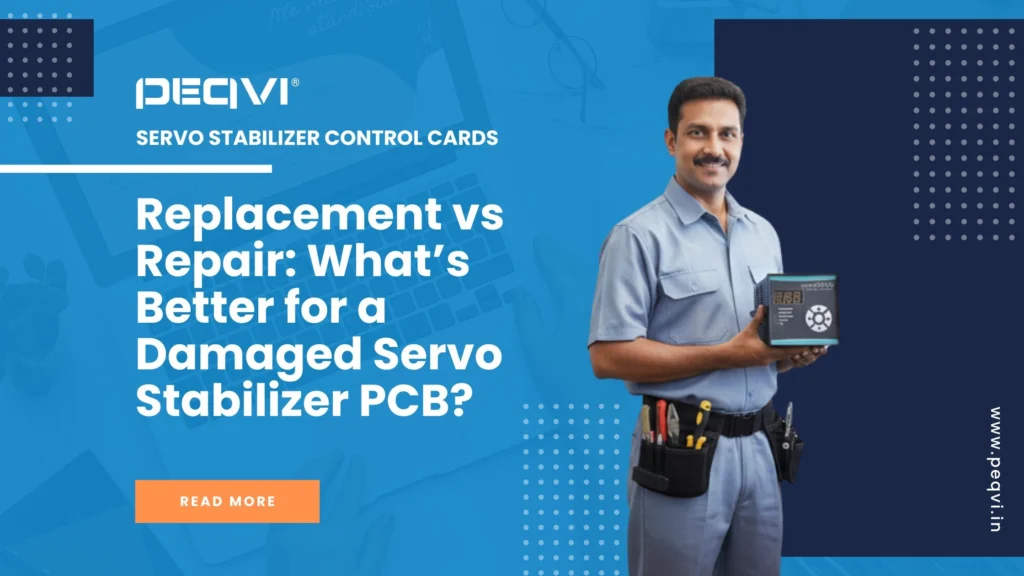A servo stabilizer works only as well as the PCB that controls it. When the PCB gets damaged, you face the big question. Should you repair it or replace it?
The right decision depends on the type of fault, the age of the stabilizer, the cost of parts, and the reliability you expect.

This guide will help you understand when repair makes sense and when replacement is the safer and smarter choice.
1. When Repair Makes Sense
Repair is a good option when the PCB has minor issues. These include loose joints, burnt resistors, faulty relays, or damaged sensing components.
These faults are simple and cost less to fix. If the rest of the stabilizer is in good condition, repair is a practical choice.
Repair also makes sense when the PCB design is basic and uses easily available components.
2. When Repair Is Not Recommended
Repair is not advisable when the PCB has deep damage. This includes burnt tracks, melted components, or damaged microcontroller sections.
Once the main processor or inner layers are affected, repair becomes risky. The board may work today but fail again soon.
In such cases, replacement saves you from repeat breakdowns.
3. Compare the Cost of Repair and Replacement
Sometimes repair is cheap. Sometimes it is almost equal to buying a new card. If the repair cost is high and the life after repair is uncertain, replacement is the better option.
A new PCB also comes with fresh components and longer life.
4. Age of the Stabilizer Matters
If your stabilizer is already very old, the PCB repair may not solve the full problem. Other parts like motor, transformer, and relays may also be weak.
If the stabilizer is more than eight to ten years old, replacing the PCB may only delay other failures.
In such cases, repair is fine only if you want a temporary solution.
5. Reliability Required for Your Application
For sensitive loads like medical equipment, servers, CNC machines, and high value appliances, it is safer to choose replacement.
A new control card gives more stable output and improves overall reliability.
For normal home loads, simple repairs may be enough if the issue is small.
6. Availability of Spare Parts
Many old or imported control cards do not have spares. Some use ICs or sensors that are no longer available in the market.
In these cases, even if a repair technician tries, he may not find the exact components.
Replacement becomes the only reliable option.
7. Firmware and Technology Upgrades
Modern control cards use faster processors, better sensing, and stronger protection features.
If your board is outdated, replacing it with a new design gives better performance and smoother correction.
Conclusion
Repair is best for minor faults and newer boards. Replacement is better when the PCB is deeply damaged, outdated, or unreliable.
Choosing the right option ensures stable voltage, better protection, and long life for your servo voltage stabilizer.
A healthy control card keeps your appliances safe and reduces unexpected failures.

